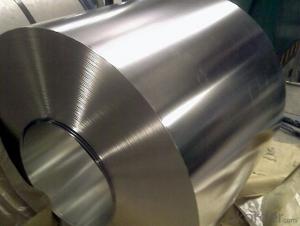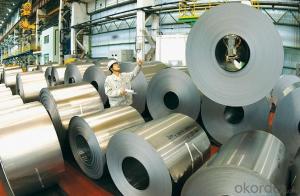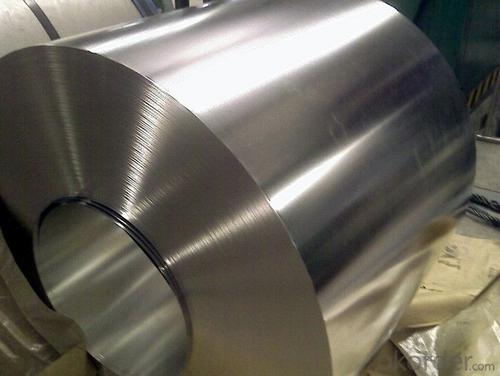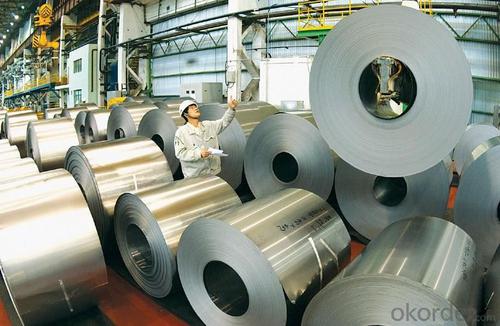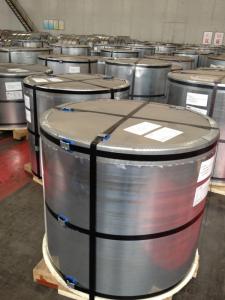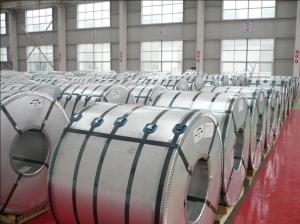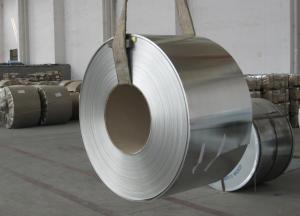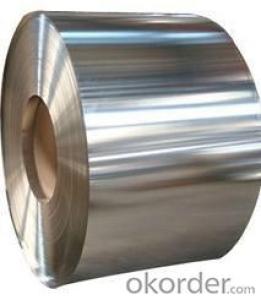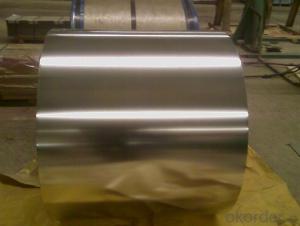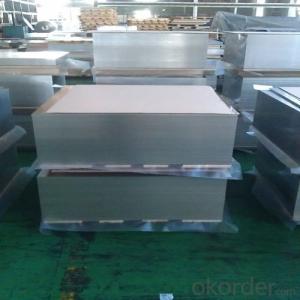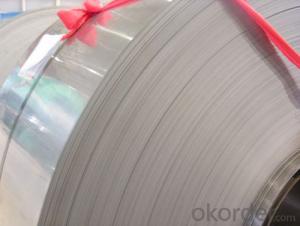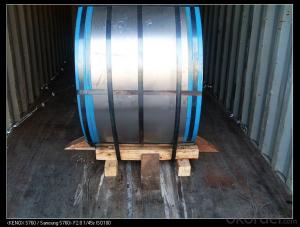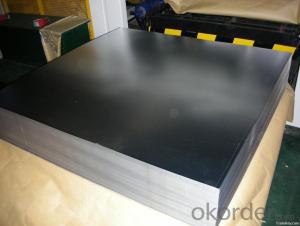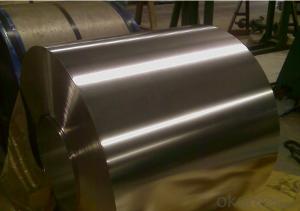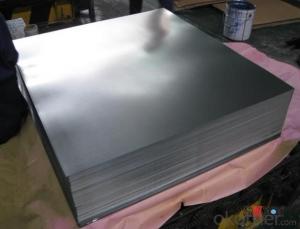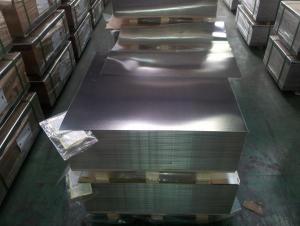Electrolytic Tinplate (ETP) Coil and Sheet in good price
- Loading Port:
- Tianjin
- Payment Terms:
- TT OR LC
- Min Order Qty:
- 25 m.t.
- Supply Capability:
- 20000 m.t./month
OKorder Service Pledge
OKorder Financial Service
You Might Also Like
1.Electrolytic Tinplate (ETP) Coil and Sheet Description
Electrolytic Tin Plate Coils and Sheets for Foods Metal Packaging, is one thin steel sheet with a coating of tin applied by electrolytic deposition. Tinplate made by this process is essentially a sandwich in which the central core is strip steel. This core is cleaned in a pickling solution and then fed through tanks containing electrolyte, where tin is deposited on both sides. As the strip passes between high-frequency electric induction coils, it is heated so that the tin coating melts and flows to form a lustrous coat.
2.Main Features of the Electrolytic Tinplate (ETP) Coil and Sheet
Appearance – Electrolytic Tin Plate is characterized by its beautiful metallic luster. Products with various kinds of surface roughness are produced by selecting the surface finish of the substrate steel sheet.
Paintability and printability – Electrolytic Tin Plates have excellent paintability and printability. Printing is beautifully finished using various lacquers and inks.
Formability and strength – Electrolytic Tin Plates have got very good formability and strength. By selecting a proper temper grade, appropriate formability is obtained for different applications as well as the required strength after forming.
Corrosion resistance – Tinplate has got good corrosion resistance. By selecting a proper coating weight, appropriate corrosion resistance is obtained against container contents. Coated items should meet 24 hour 5 % salt spray requirement.
Solderability and weldability – Electrolytic Tin Plates can be joined both by soldering or welding. These properties of tinplate are used for making various types of cans.
Hygienic – Tin coating provides good and non toxic barrier properties to protect food products from impurities, bacteria, moisture, light and odours.
Safe – Tinplate being low weight and high strength makes food cans easy to ship and transport.
Eco friendly – Tinplate offers 100 % recyclability.
Tin is not good for low temperature applications since it changes structure and loses adhesion when exposed to temperatures below – 40 deg C.
3.Electrolytic Tinplate (ETP) Coil and Sheet Images
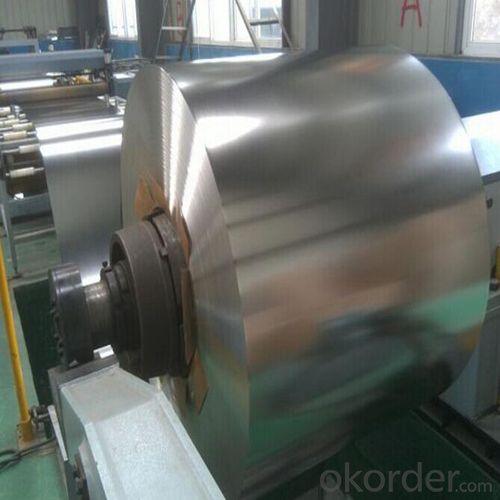
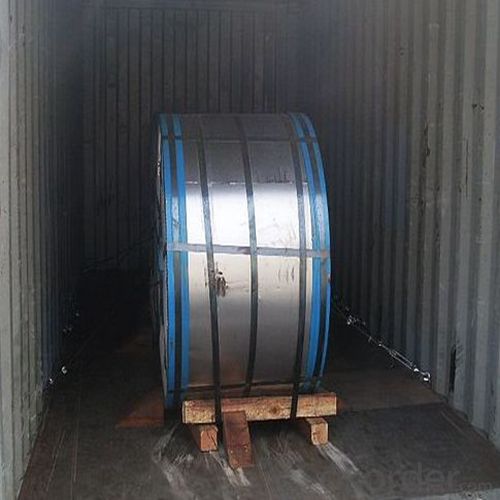
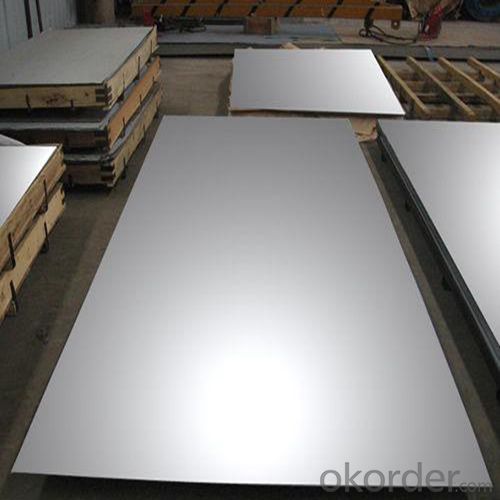
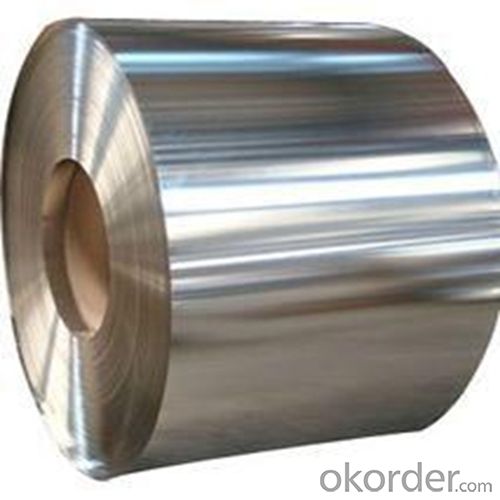
4.Electrolytic Tinplate (ETP) Coil and Sheet Specification
Standard | ISO 11949 -1995, GB/T2520-2000,JIS G3303,ASTM A623, BS EN 10202
|
Material | MR,SPCC |
Thickness | 0.15mm - 0.50mm |
Width | 600mm -1150mm |
Temper | T1-T5 |
Annealing | BA & CA |
Coil Inner Diameter | 508mm |
Weight | 6-10 tons/coil 1~1.7 tons/sheets bundle |
Passivation | 311 |
Oil | DOS |
Surface | Finish,bright,stone,matte,silver |
5.FAQ of Electrolytic Tinplate (ETP) Coil and Sheet
-What your tinplate material is used for ?
Tinplate is widely used for the packaging of products. Such as food cans,
beverage cans, pet cans, closures, general line cans and so on.
Printed Tinplate is offered!!
-How to place .an order or contact you ?
Please send us Email. we will give you a quick response in seconds .
- How is your quality ?
All our quality is prime even the secondary quality . We have many years experience
In this field with serious quality control standard . Advanced equipment, We welcome your visit to our factory .
- Q: How does tinplate packaging handle exposure to moisture?
- Tinplate packaging is highly resistant to moisture and provides an effective barrier against it. The tin coating on the steel substrate prevents direct contact between the metal and moisture, protecting the contents inside. This makes tinplate packaging suitable for various products, including food and beverages, as it maintains their quality and prevents spoilage caused by moisture.
- Q: What are the main differences between tinplate and tinplate laminates in terms of design flexibility?
- Tinplate offers limited design flexibility as it is a single-layer material, while tinplate laminates provide greater design flexibility due to their multi-layer structure, allowing for the incorporation of different materials and finishes to achieve a wider range of design options.
- Q: How is tinplate coated for toys and games?
- Tinplate is typically coated for toys and games using a process called electroplating, where a thin layer of tin is deposited onto the surface of the metal. This electroplating technique helps enhance the appearance, durability, and corrosion resistance of tinplate, making it suitable for various toy and game applications.
- Q: How is tinplate stored and handled?
- Tinplate is typically stored in a dry and well-ventilated area to prevent rusting. It should be kept away from moisture, chemicals, and direct sunlight. When handling tinplate, it is important to use proper lifting equipment to prevent damage and injuries. It should be stored in a way that avoids excessive stacking and ensures easy access for inspection and use. Proper labeling and documentation of storage is also recommended to ensure efficient handling and inventory management.
- Q: What are the main safety regulations for tinplate production and use?
- The main safety regulations for tinplate production and use include ensuring proper ventilation and exhaust systems to prevent exposure to harmful fumes, implementing effective fire prevention and control measures, providing personal protective equipment for workers such as gloves and goggles, conducting regular maintenance and inspection of equipment to prevent accidents, and adhering to strict quality control standards to ensure the safety of the final product. Additionally, proper training and education about safety protocols should be provided to all employees to minimize risks and ensure a safe working environment.
- Q: Can tinplate packaging be used for electronic products?
- Yes, tinplate packaging can be used for electronic products. Tinplate is a durable and corrosion-resistant material that provides good protection for electronic devices. It can be used to make packaging boxes, cases, or containers to safeguard and store electronic products effectively.
- Q: Can tinplate packaging be used for medical products?
- Yes, tinplate packaging can be used for medical products. Tinplate is a durable and hygienic material that can effectively protect medical products from external contaminants and maintain their stability. It is commonly used for packaging items such as medical devices, pharmaceuticals, and sterile supplies.
- Q: Can tinplate be used for packaging petrochemical products?
- Yes, tinplate can be used for packaging petrochemical products.
- Q: What are the main applications of tinplate in the sports equipment industry?
- Tinplate is commonly used in the sports equipment industry for various applications such as packaging for tennis balls, protective coatings for golf clubs, and components for hockey sticks. Its corrosion-resistant properties and ability to maintain shape and durability make it an ideal material for ensuring the longevity and performance of sports equipment.
- Q: What are the different ways to recycle tinplate closures?
- There are several different ways to recycle tinplate closures. One way is to separate the tinplate from other materials, such as plastic or glass, and then melt it down to create new tinplate products. Another method is to crush the closures into small pieces and use them as aggregate in construction materials like concrete. Tinplate closures can also be reprocessed and used in the production of new closures or other metal products. Additionally, recycling facilities may accept tinplate closures and send them to specialized recycling centers for further processing.
Send your message to us
Electrolytic Tinplate (ETP) Coil and Sheet in good price
- Loading Port:
- Tianjin
- Payment Terms:
- TT OR LC
- Min Order Qty:
- 25 m.t.
- Supply Capability:
- 20000 m.t./month
OKorder Service Pledge
OKorder Financial Service
Similar products
Hot products
Hot Searches
Related keywords
